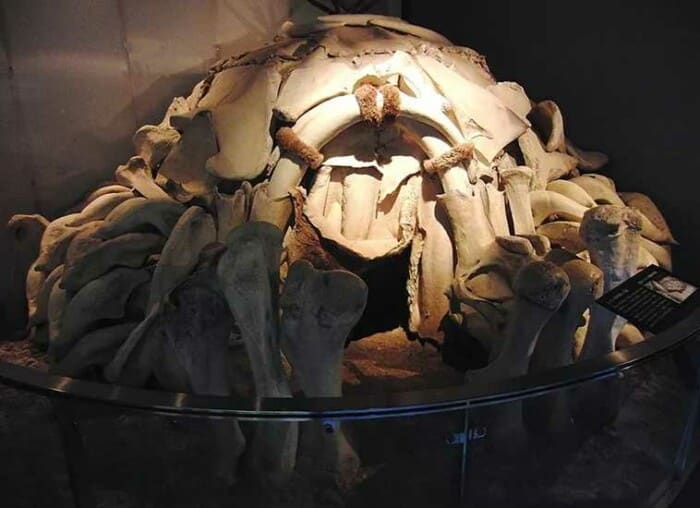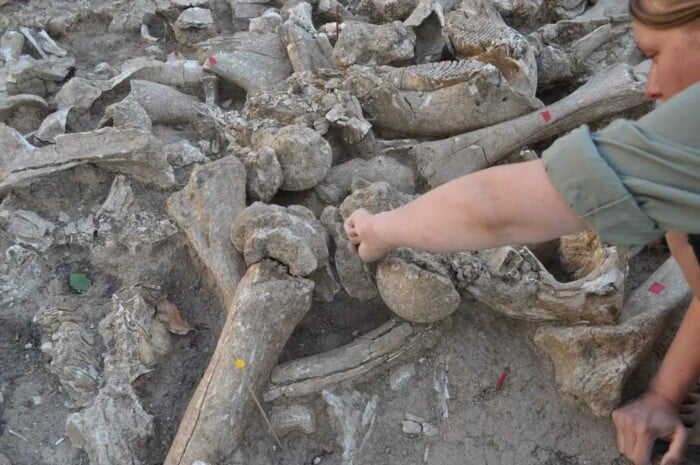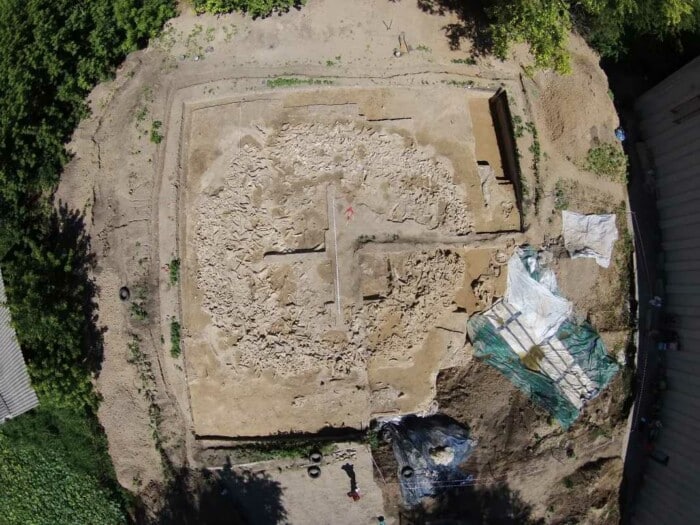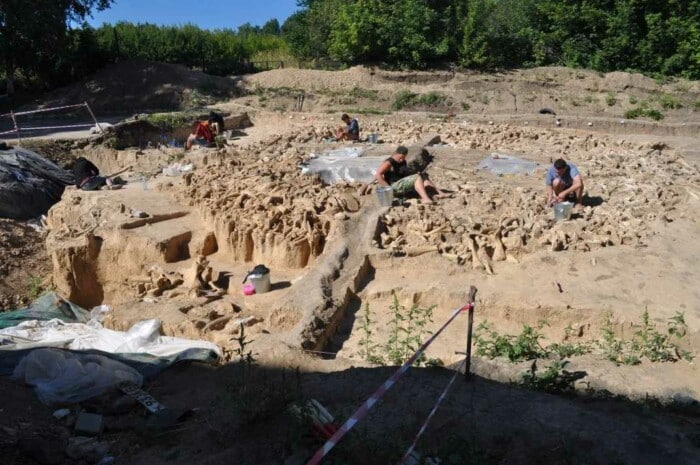Imagine living in a house made of bones. Not just any bones, but the bones of mammoths, the colossal creatures that roamed the earth during the Ice Age. That may sound like a fantasy, but for some ancient humans, it was a reality. In this article, we will explore the mammoth bone huts, one of the oldest and most remarkable examples of human architecture.

Amazing Discovery
The Mammoth Bone Hut was discovered by accident in 1965 when farmers in central Ukraine discovered mammoth mandibular bones while digging underground crypts. Little did he know that he had discovered a hidden treasure, a prehistoric village built by hunter-gatherers about 14,000 to 15,000 years ago. The village consisted of his four buildings built from stacked mammoth bones: skulls, long bones, and shoulder blades. They were oval or circular and ranged from 12 to 24 square meters in area. This place was named Mezirich after the village in which it was located. Since then, the site has been studied by various archaeologists and paleontologists to date, analyze and reconstruct the hut and its contents.
The discovery of a mammoth bone hut has caused a sensation in the archaeological world. As one researcher put it, “What a marvelous site!”, the site is one of the best preserved examples of Ice Age architecture and provides insight into the life and culture of Upper Paleolithic hunter-gatherers. provides insight into
Imaginative Solutions
Why did the ancients use mammoth bones to build their homes? The answer is simple. they used what they had. Mammoths were abundant and widespread in Eurasia during the Ice Age. They provided the people they hunted with food, fuel and building materials. Mammoth bones were strong, durable, and insulating. They can be used to create walls, roofs, floors and furniture. You can carve it, decorate it, or even burn it. Mammoth bones were a versatile and valuable resource for prehistoric people.
According to one archaeologist, mammoths “provided food, fuel and building materials.” Bones were used not only for construction but also for consumption. The site also contained large pits filled with bones and ash that could have been used for food storage or garbage disposal. The people who lived there used stone tools, bone and ivory tools, shell and amber beads. They also created wearable art such as figurines and sculptures.
Mysterious Purpose
What is the purpose of these bone huts? That is a difficult question to answer. Some scientists believe these were dwellings, or “mammoth houses,” to help builders cope with sub-zero temperatures near the bottom of the last Ice Age. Others have suggested that they have ritual or symbolic significance, possibly representing a connection to the spirit world or a homage to the mammoth. Others also argue that they were multifunctional structures that served both practical and ceremonial purposes.
The purpose of such elaborate structures remains a large open question. One archaeologist said, “People also speculate a lot about possible ritual elements, but it’s very hard to say what it was.” It may have been designed as part of a ritual as well as a ritual. activity.

Photo: Momotarou2012/WIKIMEDIA COMMONS/CC BY-SA 3.0
Looking Back
What can we learn from these skeletal huts? They are interesting examples of human ingenuity and creativity. They show how ancient people adapted to their environment and utilized available resources to build complex and sophisticated structures. It also reveals aspects of their culture, such as their diet, technology, arts, and beliefs. The hut is a testament to people’s resilience and innovation in the face of extreme conditions.
The Mammoth Bone Hut is not only impressive in its own right, but in comparison to other ancient structures. These are among the oldest and largest mammoth bone structures ever discovered. It also contains more diverse and elaborate artifacts than most other sites. They provide a unique window into the past that helps us understand our ancestors more deeply.

Diorama display at the American Museum of Natural History in NYC, based on Mezhirich.
Wally Gobetz/Flickr/CC BY-NC-ND 2.0
References
Mezrich – Paleolithic Ukrainian Settlement with Mammoth Bones – ThoughtCo: Mysterious 25,000 Year Old Structure Built from 60 Mammoth Bones |Science|Smithsonian: Ukraine’s Perfectly Preserved Mammoth Bone Hut may be the oldest example of architecture: Perfectly preserved mammoth bone hut may be as old as 25,000 years – Themindcircle: Perfectly Preserved Mammoth bone hut may be 25,000 years old
Location of the mammoth bone structure found in modern-day Russia Courtesy of Pryor et. al.









